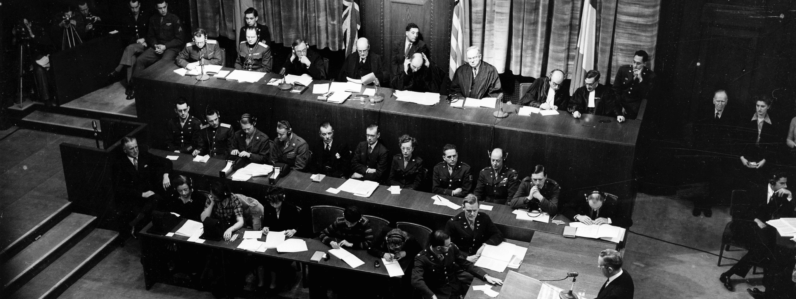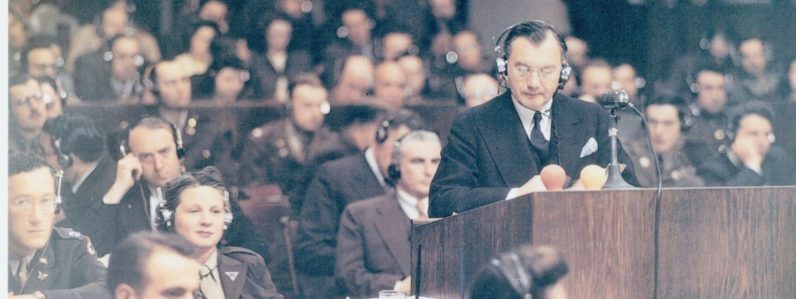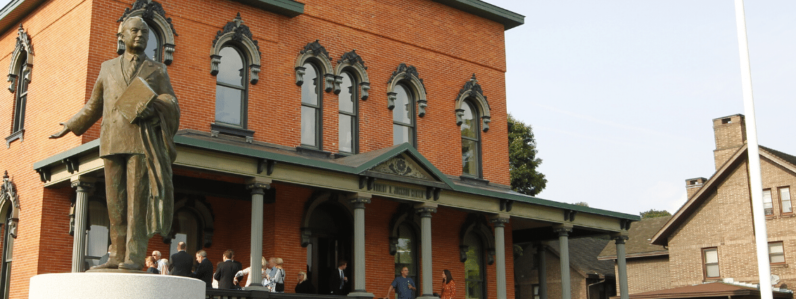WEST VIRGINIA LAW QUARTERLY and THE BAR
Volume XLI FEBRUARY 1935 NUMBER 2
THE BAR AND THE NEW DEAL•
Robert H. Jackson•
The New Deal, as it affects the future Bar and the Law Schools,goes beyond the policies of the President and is more than a party slogan or a change of governmental personnel. It is a
change in the fundamental relation of the federal government toward the governed, which has come so quickly that we have not recognized its significance.
I
From Old Deal to New Deal
After the war we elected, in 1921, to go "back to normalcy," and unintentionally went to sub-normalcy. The nation sought "recovery" at any price. The "practical" man was in his hey-day. Public office was all too often looked upon as a "power, coupled with an interest.'' Profit was the dominant motive, rugged individualism was rampant. Major policies of government had to pass the balance sheet test.
Unemployment increased, but unemployment, so long as not reaching the proportions of a social menace, was good for the Old Deal. More men than jobs kept labor in competition with itself and submissive.
The Old Deal reached its zenith in 1929. Its apparent prosperity was built upon a dangerous foundation. Grim facts about that year 1929 have been compiled and made public by the Brookings Institution.
* An Address delivered before the Association of American Law Schools at Chicago, Illinois, December 28, 1934.
•• Assistant General Counsel, Treasury Department, Former Chairman National Conference Bar Association Delegates
Nearly 6,000,000 families, or more than 21 per cent of the total, had incomes less than $1,000.00.
About 12,000,000 families, or more than 42 per cent, had incomes less than $1,500.00.
Nearly 20,000,000 families, or 71 per cent, had incomes less than $2,500.00.
Only a little over 2,000,000 families,or 8 per cent, had incomes in excess of $5,000.00.
Only a little over 2,000,000 families, or 8 per cent, had incomes in excess of $5,000.00.
About 600,000 families, or 2.3 per cent, had incomes in excess of $10,000.00.
''At 1929 prices,'' the authors comment, ''a family income of $2,000.00 may perhaps be regarded as sufficient to supply only basic necessities.... It is significant to note that more than 16,000,000 families, or practically 60 per cent of the total number, were below this standard of expenditures."
In the Old Deal year of 1929, 36,000 high income families received as much of our national income as 11,000,000 families with
the lowest incomes.
This concentration of income was not all that was going on. Captains of finance and industry were doing things to each other, as well as to the public. I can not find that the feudal barons were overthrown by their vassals or underlings. They seem simply to have fought each other to extinction. Something like this was going on among American business barons.
Berle and Means in their book, THE MODERN CORPORATION AND PRIVATE PROPERTY, show statistically the extent and rapidity
of the movement. They allege that by the end of 1929 the two hundred largest corporations (not including any banking corporation) controlled 22 per cent of all the wealth of the country, and that in the ten years between 1919 and 1929 the two hundred largest corporations had increased their holdings of the nation's wealth 85 per cent, and the same two hundred largest corporations had grown at nearly twice the rate of the smaller ones.
Concentration of control of wealth proceeded at a faster rate than concentration of its ownership. Through holding companies and the classification of securities, so as to represent the public's investment largely by bonds and non-voting stocks, small investments controlled empires of wealth. Our clients disappeared by purchase, by merger and by consolidation.
The Old Deal was digging a pit for itself. Industrial and utility men were putting inflated securities over on the bankers, bankers were putting impossible fixed charges over on the industries and utilities. Sellers put fabulous prices over on buyers, and buyers put fantastic securities over on sellers in exchange. The chief business of many lawyers and bankers was to put 2 and 2 together so as to make 10. The most profitable form of overproduction was overproduction of stock certificates. We bought water and paid for it with wind.
We reached the peak year of 1929 with national wealth and income, concentrated as never before, with underlying unemployment and low incomes, that we had almost overlooked in watching the stock ticker. We awoke and found our treasure to be little more than the wind and water and paper we had traded in. The dangerously narrow margin on which the greater number of families were living became apparent. We lost confidence in others and in ourselves.
In March of 1933 Mr. Roosevelt assumed the Presidency of the United States, at a moment when it was practically the only going concern in sight. Industry, transportation, finance and trade had thrown themselves upon the government. Captains of finance were as helpless as the humblest workman. The government was the last source of unimpaired credit, the only institution to hold public confidence. No modern government has ever undertaken such extensive measures as were necessary to save the economic structure.
No matter what our philosophy used to be or what our hopes still are, the government is today an economic as well as a political government. It is the largest of all creditors of American business, it holds more securities and collateral than any other institution, it has more mortgages on homes, and farms and is the greatest employer of labor. None of these positions did it seek, -it was driven to these positions. Events made their own terms with the theories of both parties.
Finance, business, transportation, home owners,the unemployed and many others have had their pleas to be saved from an unknown fate answered by the government. The implications and results of their salvation are as yet seen but through a glass darkly. Certainly it can be seen that government influence will and must be exerted through new channels, that it has assumed, in addition to governmental responsibilities, those of an emergency creditor, banker and employer.
By the New Deal I mean the controls, influences, interests, duties and policies which result from the government's compulsory assumption of these burdens, and their effects upon the practice of the law and the training of men for that practice.
II
The Bar and the Old Deal
Since the world war the legal profession has suffered increasing economic demoralization. While prosperity has smiled upon a limited number of lawyers with fortunate business connections, the rank and file have had a losing struggle between rising overheads and declining business. The "country lawyers" from whom we used to get our statesman have largely disappeared. Large city bar associations find many able and once well established attorneys now in need. Many lawyers abandoned practice and sought government jobs or other employment. Hundreds of young men have come from our colleges to the bar where they found neither practice for themselves nor clerkships with others.
The Old Deal era witnessed steady centralization of wealth and business control, with disastrous effect on the legal profession. Each separate business unit had been a client, each local merchant and industry helped provide law practice to the local bar. One by one the clients of the country and small city lawyer disappeared. Even the lawyers of large cities saw their business transferred to yet larger cities the merger process.
As the legal business moved toward the large centers of population, so also did it concentrate in a few large offices. Law firms merged in much the same manner that banks merged. While preserving the fiction that law practice was the franchise of the individual, they built up law offices that resembled service corporations more than traditional law practices.
The depressed and disadvantaged condition of a large part of the population of the United States was responsible, in part, for the economic demoralization of the legal profession.
We all know that clients with money are more sustaining than clients without it. The census of 1930 shows 139,059 lawyers in the United States. Yet only 600,000 families had $10,000.00 incomes, that is, apart from corporate clients only about 4 to each lawyer. The number of desirable clients had become scarce. Plainly, we needed game laws to preserve our clients. The middle class bar is suffering extinction along with its clients, due to their shrinking opportunity to create estates, acquire property, enter trade or commerce or engage in activities that call for legal service.
The great majority of people are employees of others, and have no use for a lawyer except in case of personal injury or petty offense. The young lawyer finds those cases the only law business not already reduced to possession by established firms.
The sharp division of the people into financial interests on the one hand, and employee or consumer interests on the other, has of course had a profound influence on our courts and legal system. The growing demand for administrative tribunals, which has displaced so much law practice, is based largely upon this separation of interest between the classes and shrinking of the balancing middle class.
Two middle class litigants found the law's delays, technicalities and costs to be an equal handicap. Their burden was impartial, even if heavy. But today the litigation is mostly of one pattern - a single disadvantaged individual against massed resources of a corporation. It is the injured man against an insurance company, employee against his employing corporation, debtor against financial corporation.
In these cases, delay and technicality are all to the good of him who has resources to wait, cost that is prohibitive to one is but routine expense to the other, and uncertainty that spells catastrophe to the little man with his one litigation is just a factor influencing the working of the law of averages to the professional litigant.
This unequal strength before the law has produced the demand for replacement of the law court by administrative bodies.
Chief Justice Hughes, in sustaining the power of an administrative tribunal to make final decision of facts, in Crowell v. Benson1, referred to
"the obvious purpose of the legislation to famish a prompt, continuous, expert and inexpensive method'' of adjudication
And in the same case Mr. Justice Brandeis said:
''With a view to obviating the delays incident to judicial proceedings the act substitutes an administrative tribunal for the
court"
1 Crowellv. Benson, 285 U. S. 22, 52 S. Ct. 285 (1932).
And Chief Judge Crane of the New York Court of Appeals has said:
"When, therefore, we pass fact-finding from the courts to the commissions of all kinds and leave to them the final determination of the facts unhampered by our technical rules of evidence, we have demonstrated in a very practical way the popular discontent with the ordinary method of determining much of our litigation .... The way is left open for the determination of many matters by departments of commissions, or the administrative bodies."
Thus, as you examine the demand for your product, you view a field where clients have been decimated by merger, purchase and consolidation, ruthless competition and bankruptcy, where the middle class business man has been greatly reduced and where the growing inequality of the different classes of litigants has forced society to withdraw whole classes of controversy from the field of litigation and to seek justice outside of the traditional legal method in which the lawyer's monopoly of the proceeding assured him the business.
III
The Bar and the New Deal,
There was unrestricted overproduction of lawyers under the Old Deal. Economic conditions answered by plowing under about every third lawyer.
It might be less costly and more humane if the New Deal would pay the law schools for not producing lawyers.
More seriously, however, there was never greater need for men of legal training than now, when we are in the uncertainties of a transition period. Government departments are in constant search for men who have had the best of legal education and experience without its conventional mental ossification. It seems axiomatic that men who propose to shape the legal institutions of a new era should first know the strength and weakness of the old. The handicap of the man, trained in the law as it has been, is his tendency to regard the forms, the procedures and the limitations which he has learned with an oriental devotion. He resists every departure from the ancient way, and when departure is an actuality he still refuses to go along with it.
Private practice, as well as government service, calls for a greatly increased mental horizon if the lawyer is to guide bewildered clients through the transition. Many business groups, through misguided efforts to salvage the Old Deal, are losing the opportunities of the new. If the private interests of the country ever needed in its legal advisers a statesmanlike vision instead of technical cunning, it is now.
The law schools will miss a golden opportunity if this adapting of the law trained man to a different day does not come through the law school. It will not come through the organized bar, which shows little instinct of self-preservation.
What has been the response of the organized bar to the movement to displace the courts by administrative tribunals? The obvious answer to a demand for a speedy tribunal would have been to clear up congested calendars, clean out the legal rubbish of inherited technicalities, and give a chance to try cases in court. The obvious answer to the demand for inexpensive justice would have been to strip our legal procedure of its surplus motions and get down to a simple and less expensive justice. Did we do it? We did not.
Year after year, efforts at reform were defeated by lawyer legislators with the approval, generally, of the bar associations.
The American Bar Association ignored for years the rise of the administrative tribunal until in 1984 a committee on Administrative Law became alarmed and declared the tendency to be ''threatening the whole machinery of justice'' and demanded that ''the decision of controversies of a judicial character must be brought back into the judicial system.'' Of course an alert bar would have made such reforms that the decision of such controversies would not have gone out of the judicial system.
The future progress of government lies in the direction ofcarrying law and order across the frontiers of anarchy. Past progress is by the same process. Law, administered by courts, gradually took the place of private vengeance in criminal law, and of private reprisals in settlement of civil controversies. Our Constitution extended the field of law to controversies between sovereign states, whose differences were to be heard by the Supreme Court. The Interstate Commerce Commissionput a reign of law and order over the anarchy of railroad rebating, competition and security speculating. The Federal Trade Commission represents an extension of the rule of law into the field of unfair competition. The Federal Securities Commission is an extension of responsibility fixed by law in the field of lawlessness, fraud and misrepresentation which had become part of the technique of high pressure distribution of securities. Like the Federal Reserve System, the Federal Deposit Insurance system extends the unity of law and order to a field where each had been a law unto itself.
The efforts of the law to extend its function and to reduce the area of economic or social anarchy and lawless irresponsibility has always met the opposition of the average lawyer. He has never adapted himself to the administrative method. In spite of abstract reverence for law and order he fears extension of the field of law. He thinks of his Constitution, not as a source of power to advance the general welfare, but only as a document of limitation. We hold fast to our favorite formulae regardless of conditions. What is the economic value of our formulae of ''due process of law" or of "freedom of contract" to the 12,000,000 American families whose average annual income in the prosperous year of 1929 was under $1,500.00, or even to the 72 per cent of our families whose average was under $2,500.00?
Legalism, as the science of order and the art of just administration has a place in shaping any new deal. Why should the bar so largely renounce its function of shaping it to oppose it?
We are afraid of legislation. Laymen often influence it too much. It sometimes does not fit our moulds. The legislatures, in their zeal for a cause, show little regard for individual cases. We deal with cases- not causes. And upon the bench we reverse the process and, in our zeal for cases, damage worthy causes.
We lawyers instinctively prefer law-making by litigation to law-making by legislation. The law in a statute we fear, the law in a leading case we revere. We want to reserve final declaration of the law to our courts, after hearing only a single case, with only such facts before them as served the purpose of the particular litigants. Then if the decision is too narrow we await a cluster of cases to hedge about the dodging court and corner it into a statement of its law. Moreover, it must be a private litigation. The humblest citizen, if he will hire a lawyer, stir up a controversy of jurisdictional proportion, sue on it and litigate for years, may have given to him, in a leading case bearing his name, the revelation of the law. But the President of the United States, with the welfare of the nation in his care and with a desire to know and keep the law, can not call for the opinion of the courts.
The philosophy of the law must be extended to many new relations of life. Few men quarrel with the great body of substantive law. It is our method of applying it to facts, our procedure, that makes it unavailable. Lawyers want law applied only by litigation. The litigation method has failed in such fields as rate regulation, anti-trust regulation, protection of minority stockholders, and protection of creditors through receiverships. In all of these matters the rule of substantive law promises justice and equity, but when sought through litigation the remedy is frequently more exasperating than the wrong.
May there not be some way in which the philosophers of the law may make their contribution to the government's progress into new fields, by some method other than litigation?
Should the neutral judgments of our courts of last resort be locked from public view until, long after other departments have been obliged to act, private litigants obtain their decision?
May there not be some method by which the speed, informality and low cost of administrative decisions can be combined with judicial neutrality?
Can you not, in shaping courses of study for the future, assume that an increasing proportion of your output will be absorbed by government service and equip them with greater sense of responsibility to the general welfare?
Although many eminent and influential liberals are lawyers, the net contribution of the bar to the balance of social forces is, and will likely remain, on the conservative side. May not educational bodies enable the coming profession to keep pace with the developments we all foresee in ·public law and in government, to the end that the legal philosophy may be a guide to order our progress rather than a hurdle to be overcome.
The future of the American Bar is in the hands of you gentlemen of the schools. At present the bar is one of the most stubborn, reactionary and short sighted groups in our national life, but I shall be sadly disappointed if my son should fail to join it.






